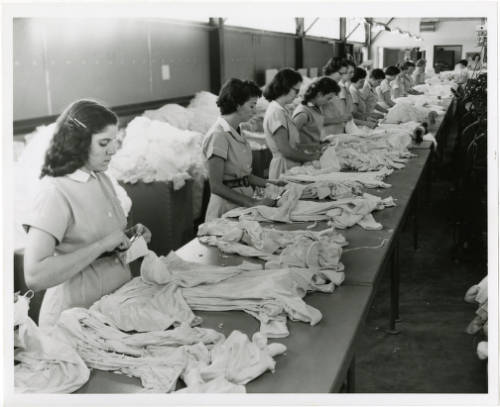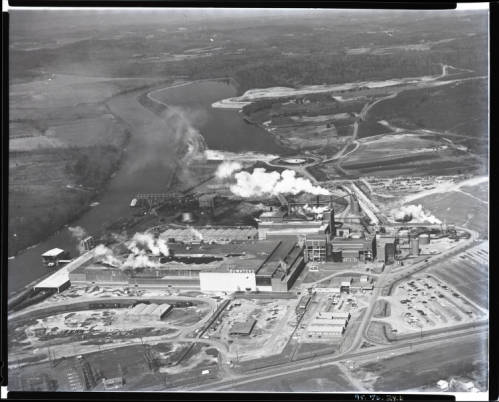This blog post was authored by Vio Midgett an intern in the Library’s Special Collections unit from the Department of History in Spring 2023.
Before my internship at the University of Tennessee at Chattanooga, Tennessee (UTC), Special Collections, I had a very glamorized view of the archival profession. I knew I wanted to pursue a career in archives, but with no experience in the field, I had no idea about the technical and meticulous work involved. Throughout this internship, I fell in love with the daily work of describing and digitizing cultural heritage resources, and from the experience, I better understand how I will pursue my future career.

I completed two Describing Archives: A Content Standard (DACS)-compliant finding aids for two separate collections within the semester I worked for UTC Special Collections: Continental Film Productions photographs and Chattanooga Venture News newsletters. In both collections, I created archival descriptions using the Getty Art and Architecture Thesaurus (AAT), determining what type of archival object the resource was and developing proper descriptions for each object. For example, to title every photograph in the Continental Film Productions photographs collection, I briefly described its primary focus and attached the appropriate view, vantage, or portrait AAT term for the specified photograph. I created digital object metadata for each archival object using Library of Congress Subject Headings (LCSH) and Library of Congress Name Authority File (LCNAF) vocabularies for places, businesses, and people involved, and followed local interpretations of Resource Description and Access (RDA) and DACS standards throughout the process. After completing the descriptions and metadata, I decided which objects should be digitized for the UTC Special Collections focus on Chattanoogan and Southern history, and digitized each archival object according to the Technical Guidelines for Digitizing Cultural Heritage Materials published by the Federal Agencies Digitization Guidelines Initiative (FADGI). By following archival specific guidelines for description and digitization, it ensured my completed DACS-compliant finding aids were uniform to other archival collections and, more importantly, easily accessible to users in the UTC Special Collections website. Throughout my time at UTC Special Collections, I digitized 57 positive and negative photographs and 12 multi-leaved newsletters.
The most difficult part of my work was learning the controlled vocabularies and specific standards for archival collections and researching specific topics to create factual finding aids and metadata. My first digital collection, Continental Film Productions photographs, was donated by Jim Webster in 1995 and contained dozens of photographs documenting and advertising Chattanoogan businesses in the mid-to-late twentieth century. Because many of the businesses documented no longer exist, have changed names, or lack information about them online, my research into the collection frequently received incomplete answers. It also proved extremely allusive to find information on Jim Webster and the Continental Film Productions company. To create the most accurate metadata and factual finding aid possible, I used Library of Congress online newspapers, specifically Chronicling America: Historic Newspapers, the Chattanooga Public Library databases, the Digital Public Library of America, microfilm holdings of the Chattanooga Times newspaper, physical copies of Chattanooga city directories, and many other online sites to research the collection. Completing the Continental Film Productions photographs digital collection both challenged my research skills and taught me the importance of perseverance in my work.

My second collection, Chattanooga Venture News newsletters, challenged me in different ways. This collection was donated by Rick Montague in 2017 and was easily researched due to the timeframe it covered and the impact of the Chattanooga Venture organization. Instead this collection challenged me technically for it was completely different from my first collection. Scouring newsletters for authors, selecting the most relevant information for descriptions and topics, accurately formatting the table of contents metadata field, and using an unfamiliar program to create a complete transcription of the newsletters created new challenges every workday. Overall the differences in digital object metadata standards between newsletters and photographs helped me better familiarize myself with archival standards for different kinds of archival objects, challenged me to be very meticulous in my work, and made me more confident in my abilities.
I am extremely grateful for the opportunity to work at the UTC Special Collections and the skills this internship has taught me. Being able to work closely with professional archivists and develop technical skills in digital object metadata and digitization helped me focus my passions in archiving and prepare me for my future.